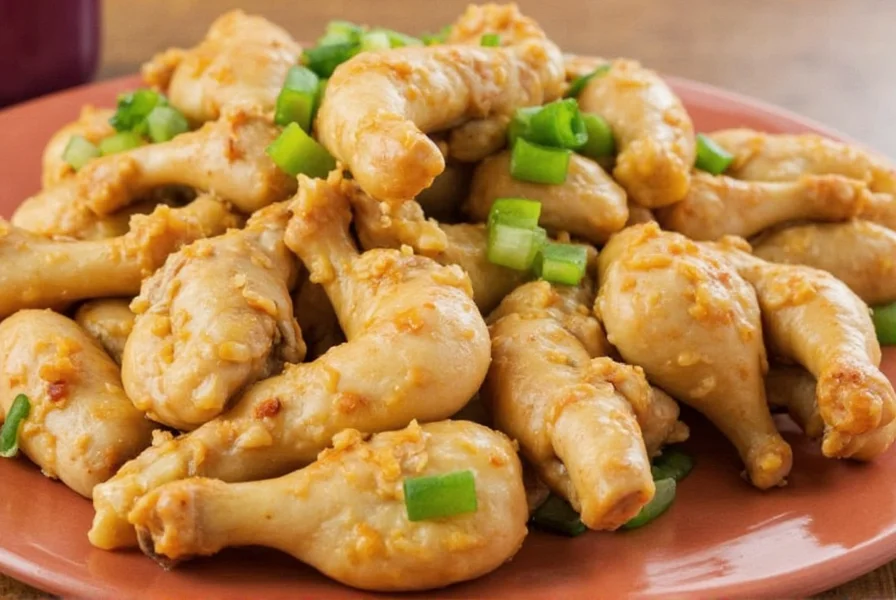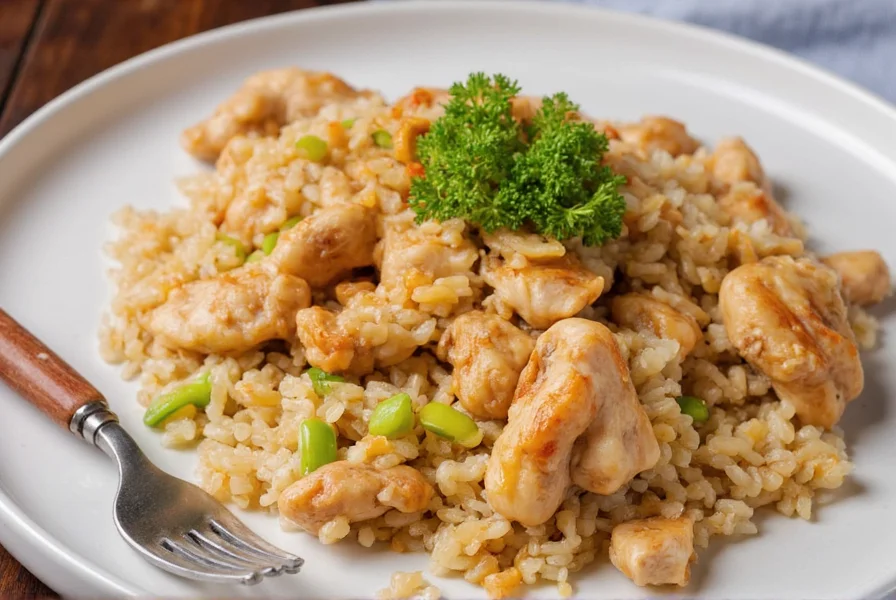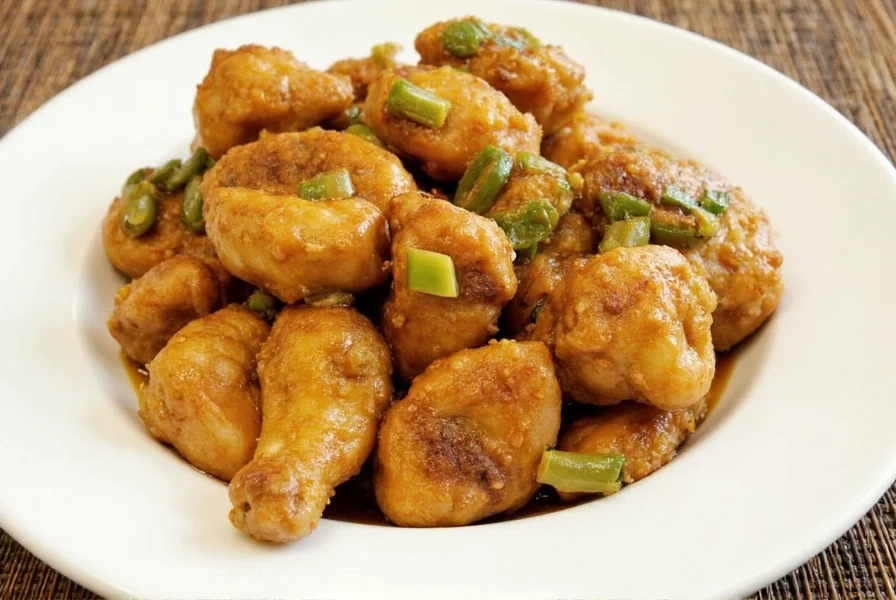When prepared correctly, ginger garlic chicken delivers a harmonious blend of savory, aromatic, and slightly spicy notes that work exceptionally well with boneless chicken thighs or breasts. This versatile dish serves as an excellent foundation for numerous culinary variations while providing substantial protein with relatively low fat content.
The Science Behind Ginger and Garlic Pairing with Chicken
Ginger and garlic form a powerful flavor duo that transforms simple chicken into an extraordinary dish. Ginger contains gingerol, a compound that breaks down tough muscle fibers in chicken, naturally tenderizing the meat while adding a bright, citrusy warmth. Garlic's allicin reacts with chicken proteins during cooking, creating complex flavor compounds that enhance umami characteristics.
Professional chefs recommend using fresh ginger and garlic rather than powdered versions for ginger garlic chicken recipes. The enzymatic activity in fresh ingredients creates more nuanced flavors and better texture modification. For optimal results, allow the chicken to marinate for at least 30 minutes—though 2-4 hours yields significantly better flavor penetration.

Essential Ingredients for Authentic Ginger Garlic Chicken
The magic of exceptional ginger garlic chicken lies in ingredient quality and proper ratios. Traditional recipes maintain a 1:1 ratio of ginger to garlic paste, typically using 2 tablespoons of each per pound of chicken. High-quality chicken with visible marbling produces juicier results, especially when using boneless thighs.
| Ingredient | Function | Quality Indicator |
|---|---|---|
| Fresh ginger root | Tenderizes meat, adds citrusy warmth | Smooth skin, firm texture, strong aroma |
| Fresh garlic cloves | Provides savory depth, antimicrobial properties | Plump cloves, tight skin, no green sprouts |
| Chicken thighs | Higher fat content maintains moisture during cooking | Pinkish hue, firm texture, no odor |
| Greek yogurt | Acidic tenderizer, helps marinade adhere | Thick consistency, no separation |
Step-by-Step Cooking Method for Perfect Results
Follow these professional techniques to achieve restaurant-quality ginger garlic chicken at home. Begin by creating a smooth paste from equal parts peeled ginger and garlic cloves using a food processor or mortar and pestle. The paste should have no large chunks for even flavor distribution.
Combine the ginger garlic paste with ½ cup Greek yogurt, 1 tablespoon lemon juice, 1 teaspoon turmeric, 1 teaspoon red chili powder, and 1 teaspoon garam masala. Add your chicken pieces and massage the marinade thoroughly into the meat. Refrigerate for 2-4 hours for optimal results—never skip this crucial step as it allows enzymes to tenderize the chicken while absorbing flavors.
When ready to cook, bring chicken to room temperature for 20 minutes. Heat 2 tablespoons of oil in a heavy skillet over medium-high heat. Cook chicken in a single layer without overcrowding, allowing proper searing. For boneless pieces, cook 5-6 minutes per side until internal temperature reaches 165°F (74°C). Rest for 5 minutes before serving to retain juices.
Avoiding Common Ginger Garlic Chicken Mistakes
Many home cooks encounter issues with dryness, uneven cooking, or overpowering flavors. Using pre-minced garlic from jars creates a bitter taste compared to fresh garlic. Similarly, dried ginger powder lacks the enzymatic tenderizing properties of fresh ginger.
Over-marinating chicken in acidic ingredients like lemon juice can make the texture mushy—limit acidic components to 30-60 minutes. Cooking at too high heat causes exterior burning before interior cooks through. Always use a meat thermometer to verify doneness rather than relying on appearance alone.

Variations for Different Dietary Preferences
Ginger garlic chicken adapts beautifully to various dietary needs. For gluten-free versions, ensure all spice blends contain no wheat fillers. Create dairy-free alternatives by replacing yogurt with coconut milk or cashew cream. Lower-sodium versions work well by reducing added salt and relying on fresh herbs like cilantro and mint for flavor enhancement.
For keto-friendly ginger garlic chicken, increase healthy fats by using avocado oil for cooking and adding a tablespoon of sesame oil to the marinade. Those following paleo diets can omit yogurt entirely and use a base of olive oil and lemon juice for the marinade while maintaining excellent results.
Serving Suggestions and Flavor Pairings
Ginger garlic chicken pairs exceptionally well with basmati rice, naan bread, or cauliflower rice for low-carb options. Complement the dish with cooling sides like cucumber raita or mint chutney to balance the aromatic spices. Roasted vegetables such as bell peppers, onions, and broccoli absorb the flavorful juices beautifully when cooked alongside the chicken.
For beverage pairings, consider a crisp Riesling or non-alcoholic ginger beer to enhance the ginger notes. The dish also works well as part of meal prep, maintaining quality when properly stored and reheated using recommended methods.
Frequently Asked Questions
How long should I marinate ginger garlic chicken for best results?
For optimal flavor and tenderness, marinate ginger garlic chicken for 2-4 hours. While 30 minutes provides some flavor penetration, extended marinating allows the ginger's enzymes to properly tenderize the meat. Never exceed 12 hours as the acidic components can make the chicken texture mushy.
Can I use powdered ginger and garlic instead of fresh in this recipe?
While powdered ginger and garlic work in a pinch, they produce noticeably different results. Fresh ginger contains active enzymes that tenderize chicken, which dried powder lacks. The flavor profile of fresh ingredients is brighter and more complex. If substituting, use ¼ teaspoon powder for each tablespoon of fresh paste, but expect less tender meat and a flatter flavor profile.
What's the best cut of chicken for ginger garlic chicken?
Boneless chicken thighs provide the best results for ginger garlic chicken due to their higher fat content, which keeps the meat moist during cooking. However, boneless breasts work well if carefully monitored to prevent overcooking. For more authentic preparations, bone-in pieces like drumsticks or thighs develop deeper flavor but require longer cooking times.
How do I prevent my ginger garlic chicken from becoming dry?
Prevent dryness by not overcooking—use a meat thermometer to remove chicken at 160°F (71°C) as it will continue cooking while resting. Include yogurt or another moisture-retaining ingredient in your marinade. Cook over medium heat rather than high heat to ensure even cooking. Finally, always let the chicken rest for 5 minutes after cooking before slicing to allow juices to redistribute.











 浙公网安备
33010002000092号
浙公网安备
33010002000092号 浙B2-20120091-4
浙B2-20120091-4